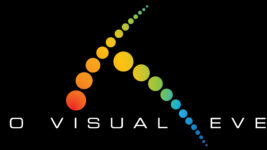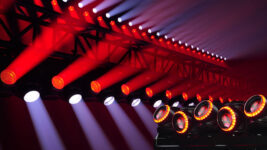INTEGRATE 2025
16 Oct 2025
MEANWHILE, UPSTAIRS…
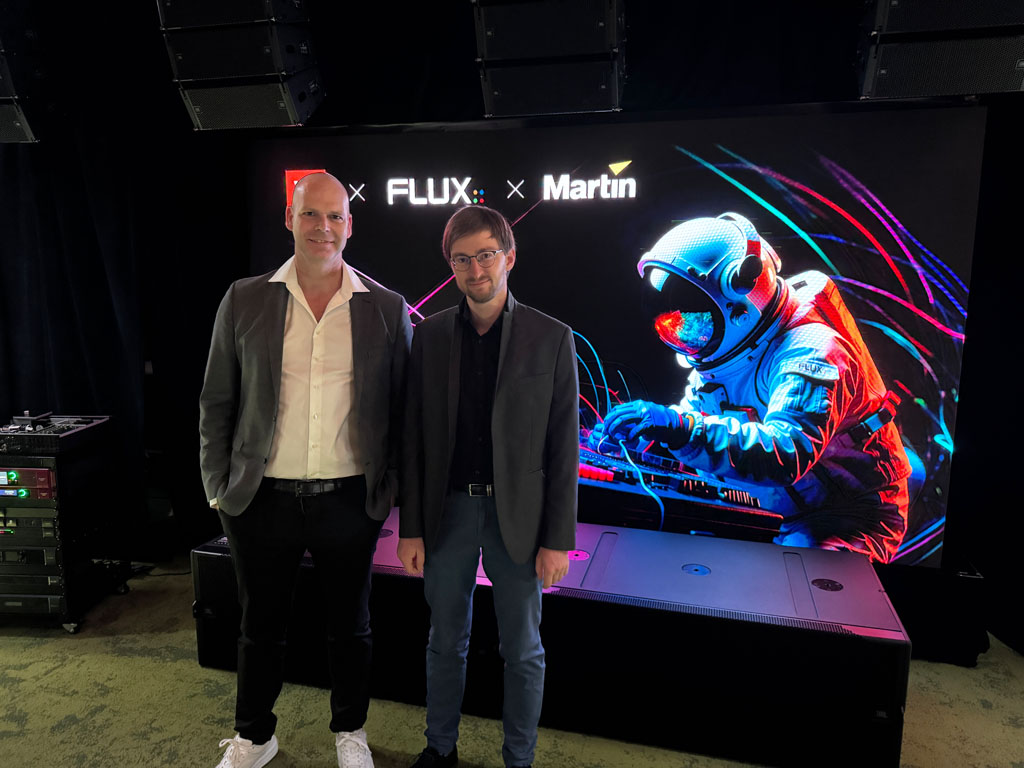
Subscribe to CX E-News
Not all of the action at Integrate is on the show floor. Level 3 was home to multiple demo and meeting rooms where companies could make noise, make deals, and feed and water their customers.
The Harman Immersive Experience
MadisonAV and Harman took full advantage of their demo room to run multiple sessions, including an educational session on AVoIP, a performance venue tech overview, and a listening session for their new Control 400 ceiling speakers and VTX A6 line array. I attended the excellent JBL x FLUX:: Immersive Audio Experience (and networking drinks!) session, which used the whole room and integrated Martin Lighting to show off the immersive audio capabilities of FLUX:: Immersive’s SPAT Revolution software, integrated into an all-JBL loudspeaker system powered by Crown amps.
Acquired by Harman in 2023, FLUX:: was founded in France by Gaël Martinet in 2006. The purchase was a savvy one, instantly adding immersive audio capabilities that JBL’s competitors were already offering, at a time when their range of high-performance loudspeakers, in the form of JBL VTX A-Series, were gaining acceptance in the high-end production world.
The demo ran through a range of tracks and styles, with some excellent use of object-oriented spatial mixing on an Imagine Dragons track, and an absolutely stunning bit of sound design that used a choir of Indian vocalists ‘speaking the bowls’; a way of learning Tabla rhythms for ragas with the voice. A screen showed us visuals of what the SPAT Revolution software was doing in real-time, and it’s user interface is straightforward and eminently useable.
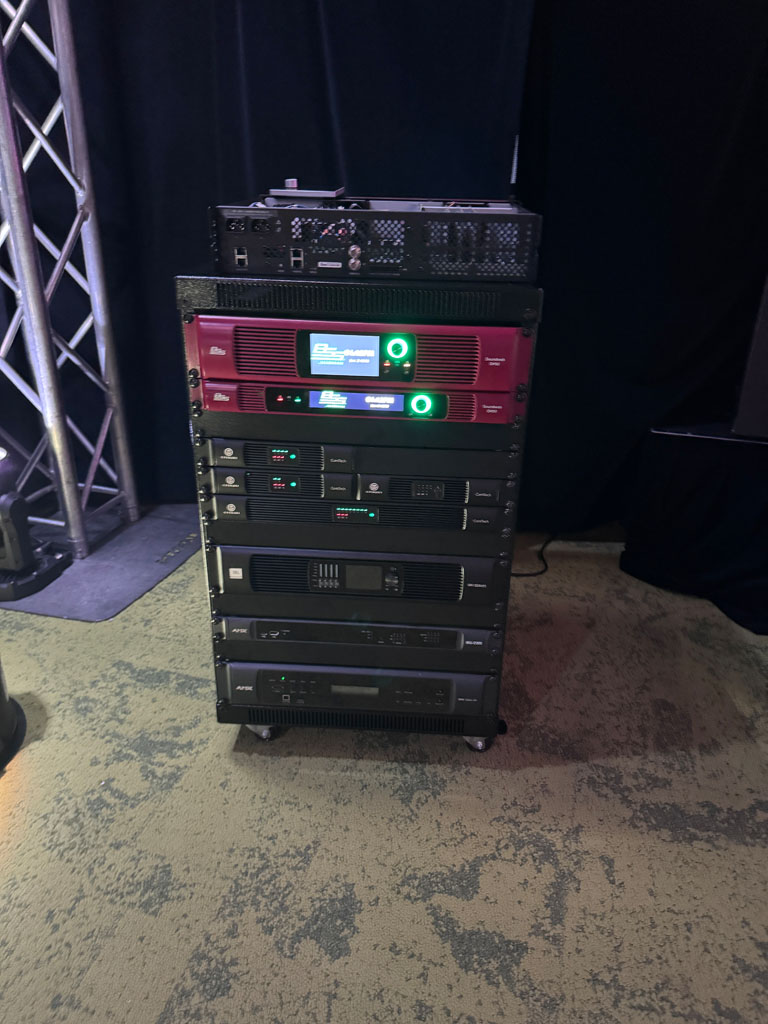
After the demo, Nicolas Erard, Software Developer and Application Support at FLUX::, talked me through the system; “We have five frontal stacks of four VTX A6. On each side we’ve got five JBL AC18 two-way speakers, with four of them in the back. On top of that we have subs. The presenter is wearing a tracker, which is sending data to SPAT Revolution, which is localising them in the frontal system. For the demo, we are running SPAT Revolution live. We’ve got a player which will play an ADM file which contains the file object and the metadata. Each track is rendered live in SPAT.”
“All signal distribution is Dante, from the console to SPAT Revolution,” continues Nicolas. “We have an RME Digiface Dante which sends and receives signal to and from the computer, then sends Dante directly to a BSS 806 processor which converts the Dante signal to analog to patch into the Crown amplifiers.”
Bjorn van Munster, Senior Manager Business Development – Immersive at Harman, was on hand to tell me about the developments at Harman as they integrate immersive into their ecosystem. “A lot of things have happened at FLUX:: over the last 12 months,” relates Bjorn. “We have been at a lot of exhibitions in the APAC and EMEA regions, showing the tight integration of SPAT Revolution with JBL’s Venue Synthesis 3D Acoustic Simulation software. We can export directly from Venue Synthesis into SPAT Revolution; that’s a really important step for us in the integration within the ecosystem.”
With a big launch at ISE 2025 in Barcelona highlighting the synergy between JBL and FLUX::, Harman then repeated their show at trade events in Singapore, India, and Thailand before bringing it to Integrate. “We’ve also added Martin Lighting to the mix,” explains Bjorn. “We’ve also added the new eight channel amplifiers from Crown. They were originally developed for the install market, but in immersive, we need a lot of channels! These kinds of small things are big steps for us within the overall ecosystem.”
Just Next Door: Barco
Barco commandeered the meeting room next door to Harman and offered both breakfast and lunch to those dropping in to see their new high-performance projectors and video processors. The star of the room was the new QDX range of projectors, with two units in their custom hydraulic housings taking up a serious amount of space.
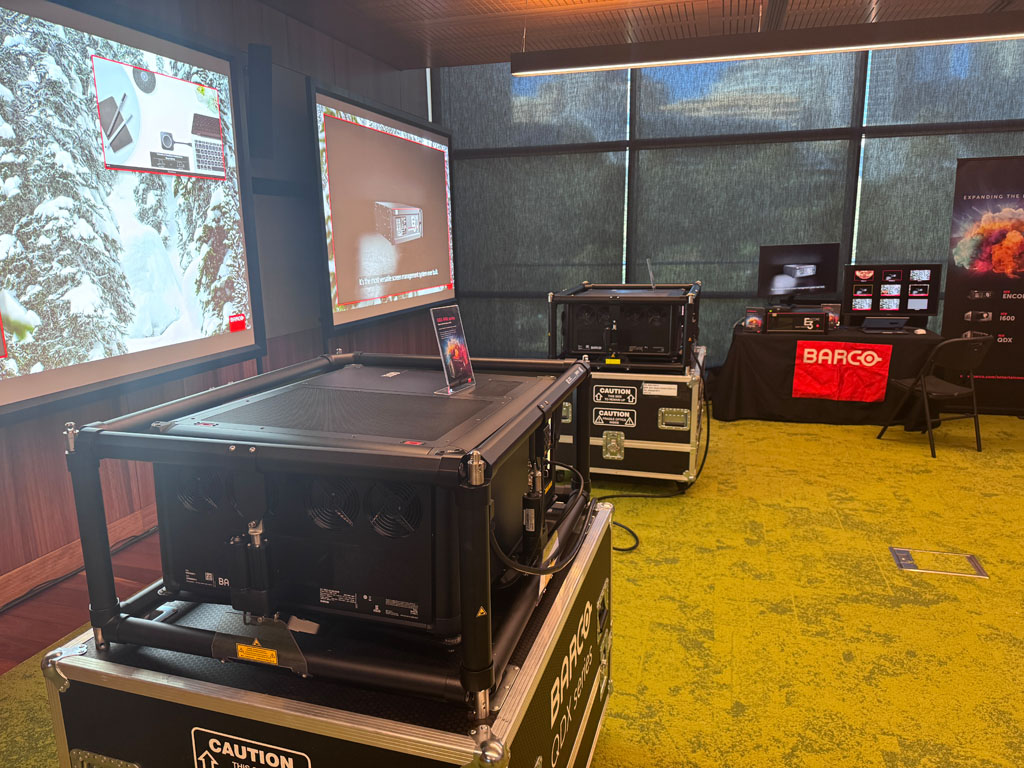
I had a look at the QDX 4K45, a 45,000 lumens, 4K UHD, 3-chip DLP laser phosphor projector. If you buy it kit format, it comes with a hydraulic motorised frame free of charge. The Connected variant, which is what Barco sell in Australia, comes with 5G for remote control and monitoring via Barco’s Insights Management software suite. This is vitally important when these projectors are out working on long running events without operators, like Vivid, or immersive installations. Adding to the remote features are camera and laser-based focusing systems, and shutters.
QDX runs Barco’s patented next generation Pulse electronics with bandwidth up to 8K@60Hz or 4K@240Hz, with more processing power. They also include DynaBlack, Barco’s frame by frame contrast enhancement feature.
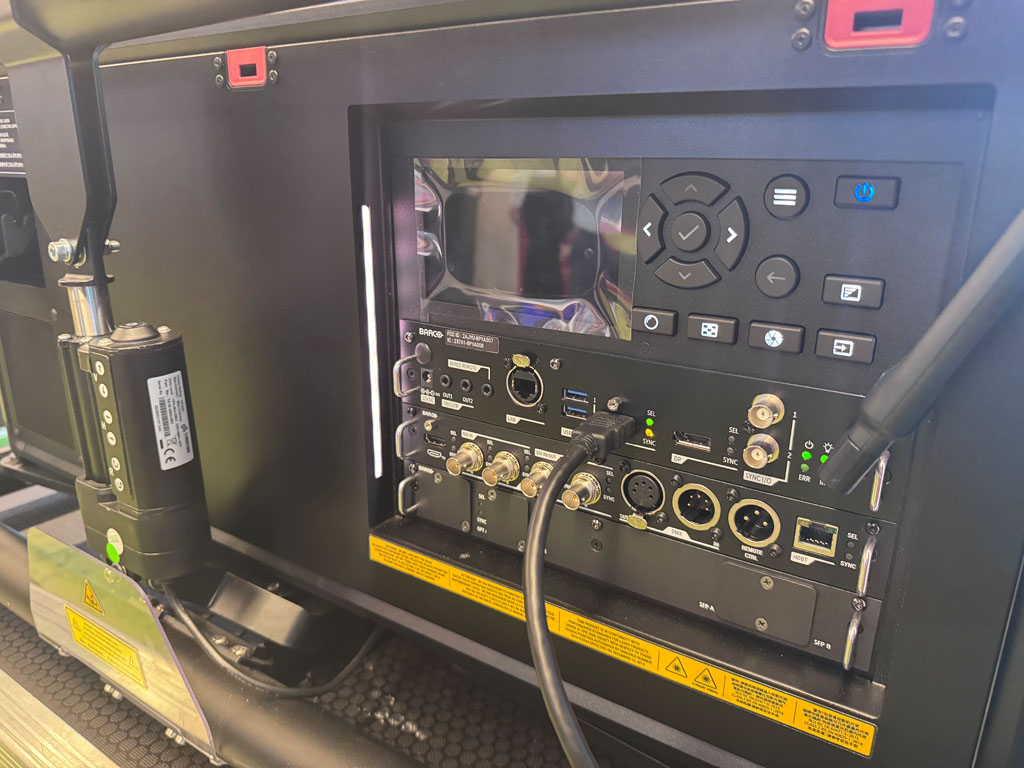
QDX – all the ins and outs
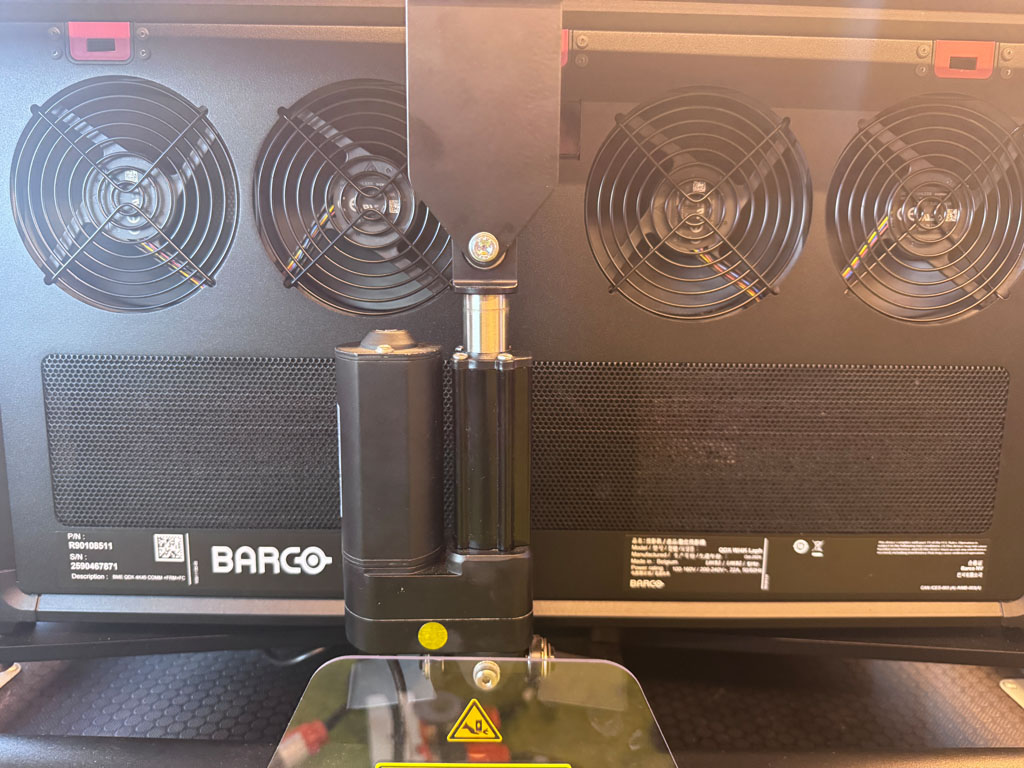
Thanks to an internally developed smart algorithm, DynaBlack enhances projector contrast ratio up to 20.000:1. Existing Barco customers can reuse their existing rental frames, flightcases and the TLD+ lens range with throw ratios from 0.4 – 11.6:1.
For those who don’t need to light up the Sydney Opera House, the new I600 projector, a single chip laser, may be more your size. The I600 is designed to offer exceptional colour fidelity, 4K UHD resolution, and a long working life. It also runs Barco Pulse electronics and can pixel-shift up to 4KUHD@60Hz. The Pulse platform comes with Barco’s patented Supershift technology, which combines Barco’s own pixel shift algorithms with the latest developments in super-resolution technology, which is being used to improve the quality of medical and scientific imaging. The Pulse ecosystem also includes various software tools such as Pulse Prospector, Pulse Mobile App, Pulse toolset and Insights Management Suite to enable easier projector control on-site and in the cloud.
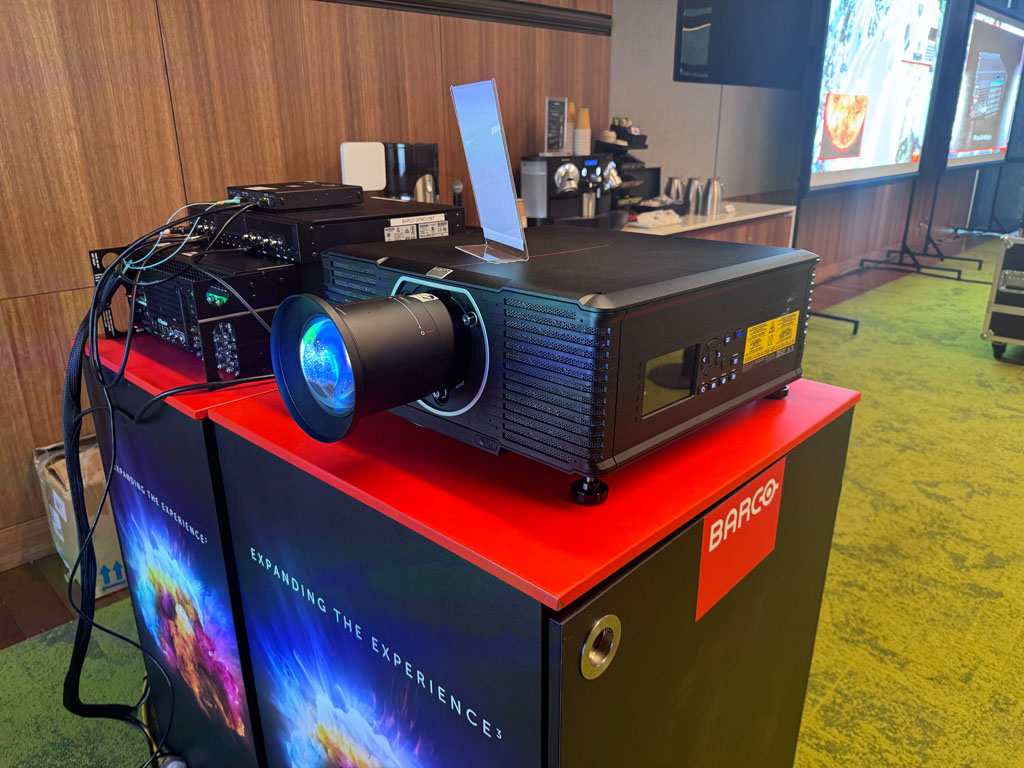
Barco claim that the I600 is the most compact and lightweight design in its category, making for operational efficiency in logistics and transport.
For those at the pointy end of event operation, Barco’s new Encore3 video processors promise to give you the highest quality video with the lowest possible latency. With latency down to 16ms, the Encore3 runs 12 bit 4:4:4 processing with always-available 8x 4K60 layers per screen. With Dante included, operators can embed and de-embed digital audio, while working on screen composition for layered videos. The screen management system is designed to safeguard customer investments through card and controller reusability, and Barco expanded the I/O count of Gen2 cards to 4x4K60p.
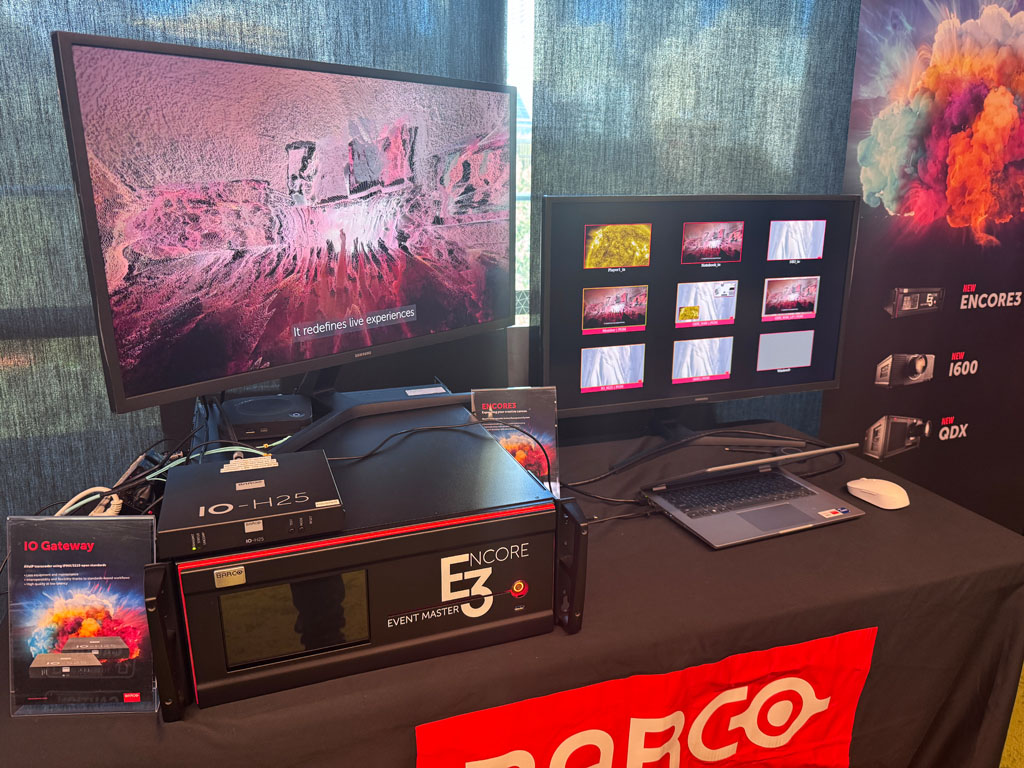
The Encore3 is available on ‘build to order’ basis, meaning companies can select the system that matches their requirements. Thanks to a wide range of modular input or output cards and a flexible slot-based architecture, users can tune the system to the exact configuration they need.
Main Pic: Bjorn van Munster and Nicolas Erard with VTX A6 frontal arrays
Subscribe
Published monthly since 1991, our famous AV industry magazine is free for download or pay for print. Subscribers also receive CX News, our free weekly email with the latest industry news and jobs.


